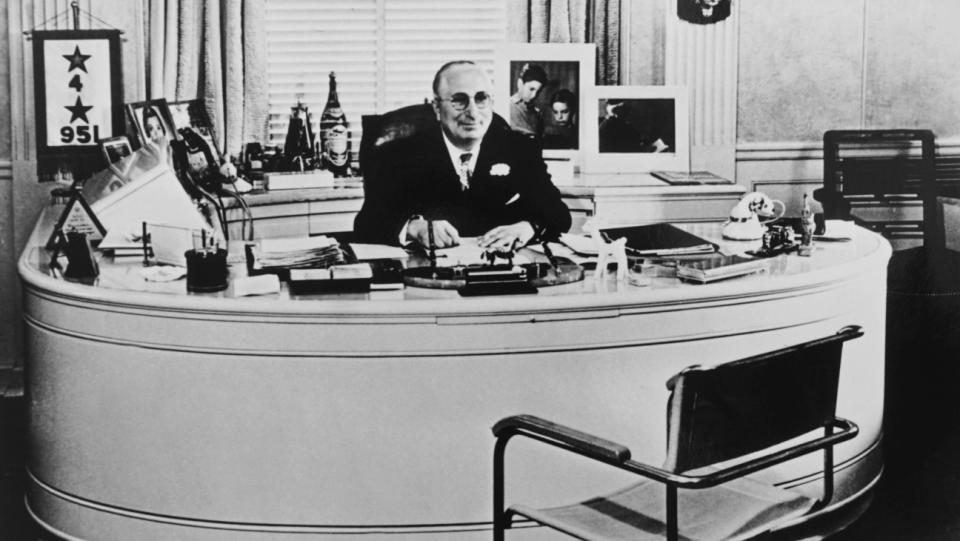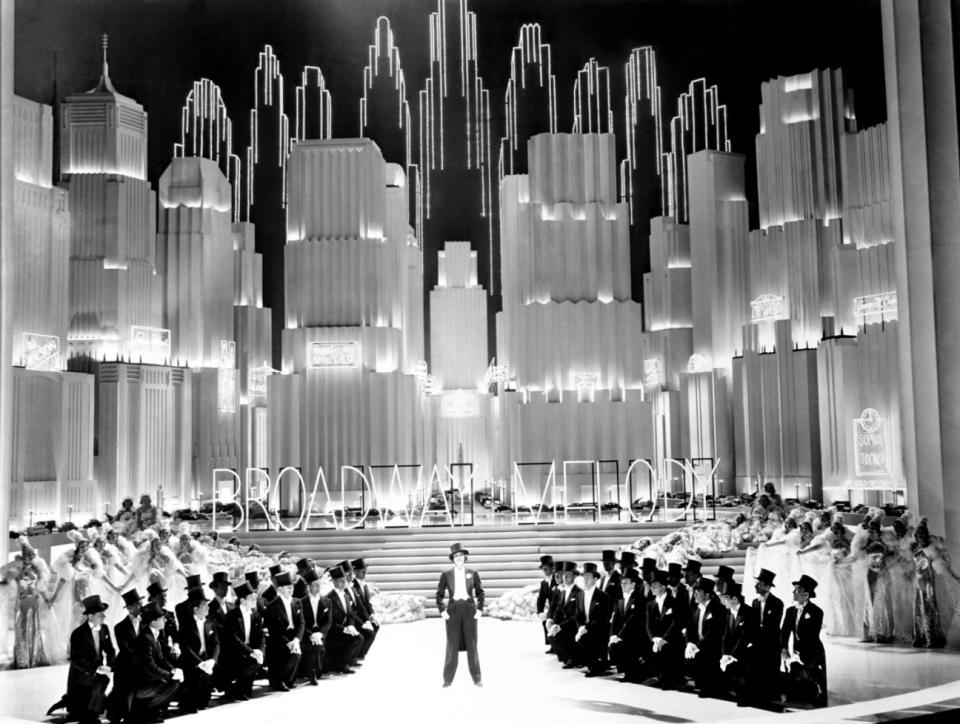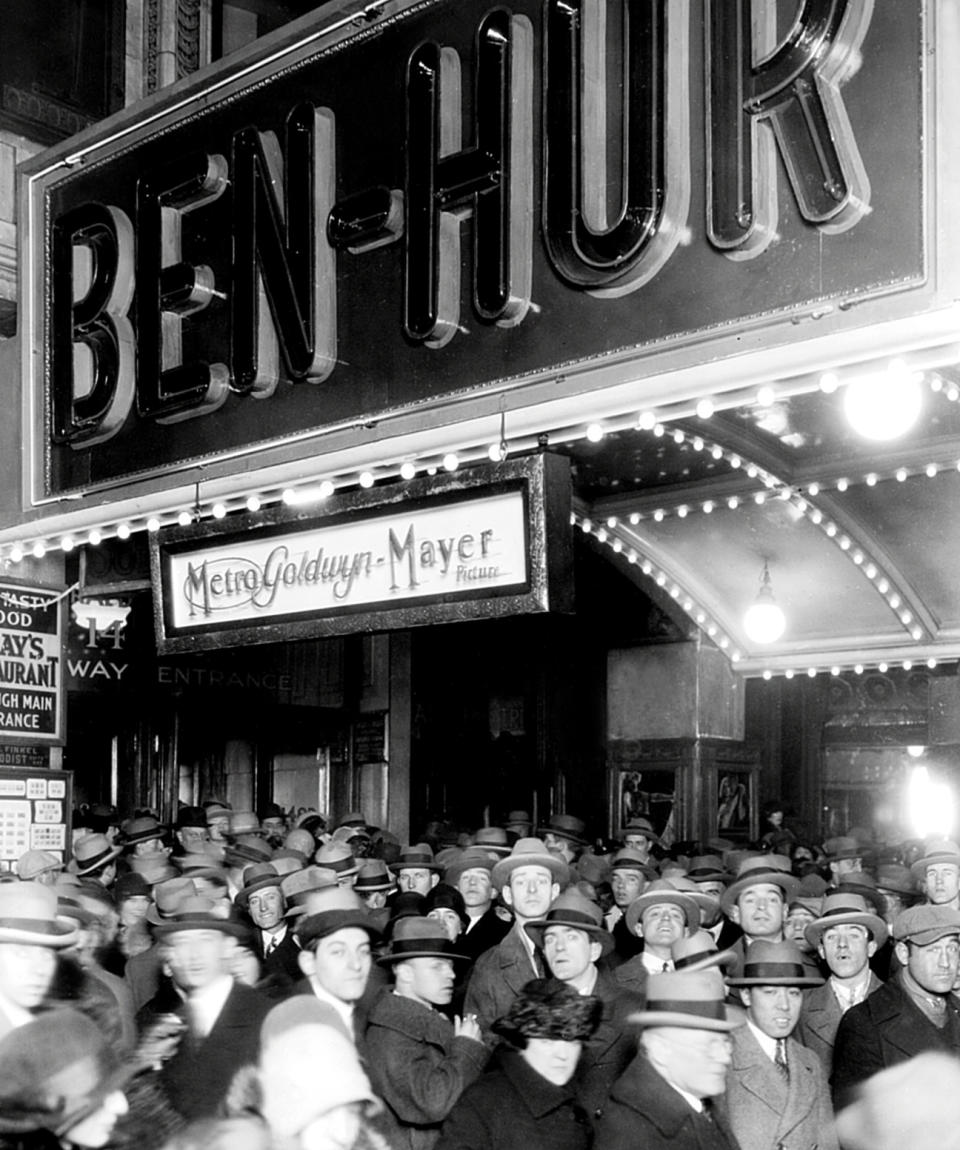When MGM Ruled Hollywood: The Rise (and Fall) of Amazon’s Next Prize
- Oops!Something went wrong.Please try again later.
- Oops!Something went wrong.Please try again later.

Ars gratia artis is the motto curving above the headshot of a roaring lion, a corporate logo as well known as any designed by twentieth-century capitalism. We know what to expect next, but the curtain raiser is a double misdirection, first because Latin was not the usual second language spoken around the studio (that would be Yiddish) and second because the featured attraction was never for the sake of art alone. On the other hand, the roaring lion (Leo, as the ad-pub boys dubbed him, whichever cat actually did the vocals) was pure truth in advertising: the king of the Hollywood jungle poised to eat the competition alive.
That was then. Now it is MGM that is expected to be consumed by a corporate entity higher up the food chain, one that is named for a jungle. As Amazon — pending the approval by the Federal Trade Commission — acquires MGM for the reasonable price of $8.45 billion to feed its streaming pipeline, it also seems eager to bathe in reflected glory of the greatest of all studio system brands.
More from The Hollywood Reporter
MGM's 'Billy the Kid,' Soccer Series 'The Net' Among MIPDrama Lineup
Former MGM President Jonathan Glickman Launches Panoramic Media Banner
That MGM story begins with the last initial in the abbreviation, Louis B. Mayer, the biggest of the Hollywood big machers, the mogul who lived and sold the American dream as passionately as Benjamin Franklin. Born in 1885 (or maybe 1883) near Minsk (or maybe Kiev), he was bundled by his Jewish parents to St. John, New Brunswick, at the age of three.

By most accounts, mainly his own, he entered the family business at age eight, towing a little red wagon loaded down with scrap metal. While still a teenager, he was supervising scores of men doing ship salvage work, a job that led him to Boston, where, like so many hustling entrepreneurs, he noticed the long lines in front of the refurbished storefronts called nickelodeons. In 1907, he opened his first theater in Haverhill, MA, and, catering to the tastes and religion of the locals, as he always would, programmed Christian-centric fare like The Passion Play (1907) and From the Manger to the Cross (1912). By 1915, his pockets were deep enough — and his instincts canny enough — to pay the astounding sum of $25,000 for the New England exhibition rights to The Birth of a Nation. He made a fortune. By 1918, under the shingle Louis B. Mayer Productions, he had followed the smart money out to Hollywood and was off and running.

In 1923, Mayer poached a skinny, sickly twenty-three-year-old wizard named Irving Thalberg from Carl Laemmle at Universal, an acquisition more important to the company than any star he ever put under contract. Then, on April 17, 1924, he helped arrange the merger that would instantly make the result into the biggest production, distribution, and exhibitor outfit in Hollywood, the union of Metro Pictures Corporation, a production arm of Loew’s, Inc., the mammoth theatrical chain; Goldwyn Pictures Corporation, the fiefdom of a former glove salesman formerly known as Samuel Goldfish; and the Louis B. Mayer Company. (Goldwyn, who did not work well with others, took the money and left behind only his initial.)
The real power behind MGM, the guy who called the shots, was Nicholas M. Schenck, head of Loew’s, Inc., the parent company back in New York, but Mayer basked in the press clips and high profile as the on-site overseer of the huge acreage at Culver City. He also steamrolled through the rest of the town as a self-appointed industry spokesman and city father. In 1928, he pitched the concept for what became the Academy of Motion Picture Arts and Sciences. Originally conceived as what skeptics called “a one-sided racket of which the producers would have control,” it soon morphed into a guild dedicated to promoting “the honor, dignity, and good repute of the profession.” Oh, and “the bestowal of awards of merit for distinctive achievements.”
“Colorful” was the euphemism used to describe a personality that, even by mogul standards, was obnoxiously outsized. Mayer had a short fuse and, in fits of anger, was known to strike underlings and overlings alike (he once decked Charlie Chaplin). A richer source of L. B. (sometimes Louiebee) anecdotes was his breast-beating bouts of maudlin — and manipulative —sentimentality. In 1933, he delivered perhaps his most bravura performance, turning on the waterworks to convince his stable of contract players to accept a 50 percent salary cut, a star turn recently reenacted in David Fincher’s Mank.
In the days when the studio signage also defined a studio style, MGM projected a celestial realm of romance, adventure, and unattainable gorgeousness (think of Judy Garland warbling “You Made Me Love You” as she moons over a photo of Clark Gable in MGM’s Broadway Melody of 1938). If Paramount sold European sophistication and Warner Bros. trafficked in streetwise realism, MGM conjured a sumptuously decorated world illuminated by, in its famous boast, “more stars than there are in heaven.” (“This was inaccurate numerically,” objected trade reporter Ezra Goodman.) Alone of the major studios, MGM sailed above the worst years of the Great Depression profits intact. No wonder, as Variety said, the studio was “generally regarded as being the film industry’s equivalent of General Motors and U.S. Steel.”

Everett
Film historians have long argued about how much Mayer had to do with the high-quality craftsmanship rolling off his factory floor. Ever since the publication in 1957 of Bosley Crowther’s The Lion’s Share: The Story of an Entertainment Empire, head of production Irving Thalberg has been touted as the true genius of the MGM system, the man whose mark, though never screen credit, is imprinted in the films he supervised. “Louis never personally made a picture in his life,” scoffed gossip columnist Hedda Hopper, a former MGM contract player who served as unpaid publicity shill for Mayer and who bad-mouthed “the tubby bespectacled little tyrant” only after he was safely dead. Mayer was so notorious for absenting himself from the studio to cheer on his horses at the Santa Anita Race Track that a fed-up Nick Schenck eventually gave him an ultimatum: pick a stable. (In 1947, Mayer sold that off for $1.5 million.)
Yet after Thalberg’s death in 1936, the MGM machine never skipped a beat. Mayer was not as obsessively hands on as say his son-in-law David O. Selznick, who could be, but he was not uninvolved or unwilling to intervene and make final cut (as when he tacked on a happy ending to the relentlessly grim Thomas Hardy adaption Tess of the D’Urbervilles [1924]). In An Empire of Their Own: How the Jews Invented Hollywood, published in 1988, cultural historian Neil Gabler casts Mayer as the super-patriotic patriarch of home, studio and nation who may never have written a line of dialogue, but whose vision infused the MGM product line. No less than the Latin and the lion, the idealized, nuclear units were an MGM trademark — in Meet Me in St. Louis (1944), Father of the Bride (1950), and most of all, the 15 Andy Hardy films (1937-1946) that Mayer doted on. In Mr. Hardy’s neighborhood, Americans practiced an unspecified brand of Protestantism whose central tenets were well-manicured lawns, man-to-man talks, and let’s-put-on-a-show spunk. It was the kind of neighborhood that the rock-ribbed Republican, who kept portraits on Herbert Hoover and Cardinal Spellman on his office wall, would have liked to have grown up in, assuming his family could have gotten around the restrictive covenants.
In 1948, sensing the need for fresh blood in a postwar world of television and arthouses, Nicholas Schenck brought in Dore Schary as vice-president in charge of production. While presiding over RKO in 1946-47, Schary, who started his career as a screenwriter at MGM in the 1930s (he was hired sight unseen and thought to be a woman because of his first name), had perfected a formula for garnering both critical esteem and box office success. He was seen as younger, hipper, and more urbane than the old guard moguls.
No sooner had Schary been installed at MGM than a classic oedipal-generational battle of sensibilities ensued. Schary and Mayer fought bitterly over William Wellman’s Battleground (1949), a gritty combat film that was the antithesis of MGM’s tradition of colorful family friendly fare. Schary won out and the picture was a huge commercial and critical hit. American moviegoers were moving beyond Andy Hardy.
Soon too, the Loew’s stockholders were moving beyond Louis B. Mayer. On June 25, 1951, after twenty-seven years in harness, Mayer was ousted from the studio he founded. He pledged to remain in the business “to make pictures you can take your mother and your children to see,” though by then most moviegoers weren’t doing any such thing. He never made another movie.
MGM qua MGM, at least as Mayer lived it, was also fading away. The people who had built the studio and preserved its practices and institutional memory had vanished, it seemed to Hollywood, almost overnight. In 1956, with the once-flush studio in the red, Schary was booted. Nicholas M. Schenck had stepped down earlier that year. General manager Eddie Mannix, who had taken the operational reins from Thalberg, also retired in 1956. Ida Koverman, Mayer’s long-time executive secretary (she practically ran the joint), died in 1954. Schenck’s successor, Joseph R. Vogel, declared that really, there was no need for a hands-on studio chieftain guiding production because the studio could farm out projects to independents.
From the 1950s to today, whichever corporate behemoth took possession of a majority of the MGM stock, the unspooling of the logo announced only a motion picture not a portal into the former dreamscape. Perhaps the last ur-MGM film was Ben-Hur (1959), a remake of the first ur-MGM film released in 1925. The last film shot on the old Culver City lot was That’s Entertainment (1974), a clip-a-thon of vintage montages, where Bing Crosby and Fred Astaire wander the old grounds like lost souls.

MGM eulogists can choose between two curtain closers. The first is the death of the founder in 1957, when Mayer, age 72, succumbed to leukemia. The valedictions mourned not just the man but the glory days of an industry. “With him also has passed an era, the most fabulous in the history of the entertainment world,” wrote Hollywood Reporter’s founder Billy Wilkerson, laying it on thick.
The other death knell is symbolic. In 1969, the Las Vegas tycoon Kirk Kerkorian gained control of MGM and appointed former CBS-TV chief James T. Aubrey Jr., as president and CEO. Aubrey decided to cut overhead and sell off MGM’s warehoused collection of props, costumes, jewelry, and memorabilia, over 25,000 items from more than 2,000 MGM films. MGM alum Debbie Reynolds knew at the time it was a boneheaded, short-sighted move, that if the suits were interested in raking in money, all they had to do was put up turnstiles and charge admission.
No one listened. On May 3, 1970, on the cavernous Stage 27 on the Culver City lot, a good chunk of the material heritage of MGM went up on the auction block, netting a reported $8 million-$10 million. Stars like Reynolds, Rock Hudson, and Stephen Boyd (looking for his chariot from Ben-Hur) bid against ordinary moviegoers to take home a piece of MGM’s history and, like Jeff Bezos, have some of the magic rub off. Up for grabs were Dorothy’s ruby slippers, Andy Hardy’s Model A, a French boule mantel clock from Ninotchka — everything but, to lift an image from a rival studio, Mayer’s little red wagon, presumably going up in flames in a basement furnace.

